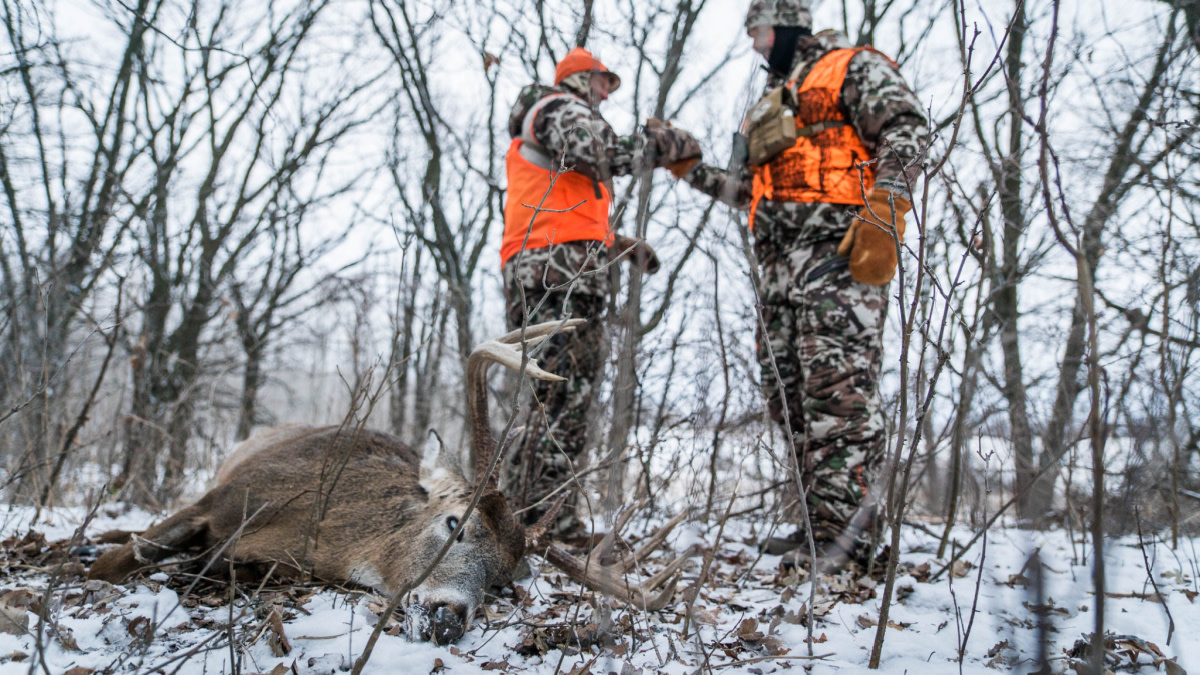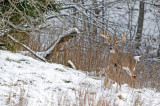
Many hunters claim that December is often the best time to kill a mature buck. After all, the rigors of the rut caused them to drop 25% of weight, and packing on pounds is of utmost importance. So, simply hop on your side-by-side and drive out to your favorite box blind to shoot a hitlister over your protein-packed food plot, right?
As someone who primarily hunts public land, or private land that feels like public land, that advice never resonated with me. I’ve been lucky enough to photograph deer in those situations, but never hunt them. For me, it’s always been about chasing ghosts. Those field-edge setups in December might turn up a fawn or a forky, but never a mature buck. In fact, killing a mature doe late season has never been all that easy, either.
To find bucks, or any consistent deer action in December, I’ve had to ignore traditional advice and go where the bucks are most likely to move in daylight.
Hunt Bedding
Eyad Yehyawi is a whitetail junkie and author of the bowhunting book “Crimson Arrows.” He’s gone a similar route to find deer during the last weeks of the season.
“I run trail cameras along suspected bedding areas and then plan to hunt the downwind side of those areas when the wind is right,” Yehyawi said. “This strategy lets me see more bucks in daylight, and I came to realize that they were most likely to move when the wind favored them and wasn’t perfect for me. If the wind was too good for me, they wouldn’t travel the way I needed them to.”
Yehyawi also notes that bucks seem to move at a glacial pace, an observation I’ve made with late-season deer as well. While the youngsters might get out of their beds to trot in the direction of groceries, many deer seem to intentionally drag their hooves and slowly work to where they want to go. It’s almost like watching one of your kids get ready for school when they don’t want to. Yehyawi believes this observation is the key to the next step.
“The first setup on the edge of a bedding area often gives me the chance to see bucks moving along a dip in the ridgeline or maybe past an old hickory tree, which tells me where I need to move my setup,” Yehyawi said.
This observe-and-move strategy is popular during early season and the rut, but doesn’t get a whole lot of love in the late season. That’s just wrong.
Calls and Decoys
When it comes to December deer, unless you’re a deep South hunter, you probably want to leave your rattling antlers and full-body decoy at home. While the second rut is real, it’s also mostly a nonevent for hunters. In 28 years of bowhunting pressed whitetails, I’ve probably seen chasing and rut activity in the late season three or four times.
Deer are social animals, however. While a grunting and snort-wheeze fest might not be the best way to bring a deer close, a soft contact grunt or a bleat might. If you’re more concerned with meat than antlers, soft, plaintive bleating to does that are out of range can bring them back around. They’ll be on the lookout for the deer they hear, so be careful with your movement.
You can decoy deer in December too, but it’s not your traditional setup. Instead of using a buck that looks like he wants to fight, opt for a doe with its head down that looks like it’s feeding. I’ve used these as confidence decoys in late-season situations. While the reactions vary wildly, sometimes deer take it as a green light to move your direction. When they do, it’s pretty cool. When they don’t, it’s pretty frustrating. But with days that are numbered, this might be the creative solution that works.
The Still-Hunt
When I was growing up, a lot of bowhunters still-hunted—creeping through the woods at prime hours hoping to sneak up on deer. Today, it’s mostly a lost art. That’s a shame because it can be really effective and really fun. With a bow it’s a crazy challenge, but with a gun it’s a great way to fill tags.
Whatever your weapon choice, the conditions are everything. If it’s crunchy, forget it. If you’ve got a few inches of powder and a decent breeze, then set out. Traditional advice would be to cover a few hundred yards over a couple of hours, but that’s not possible for most folks. Your pace should be as slow as you can handle, and you should glass frequently. If you have the chance to follow fresh tracks, follow them. Tracking deer doesn’t necessitate the vast tracts of public land found in the Northeast where this tactic is commonplace.
I shot the biggest doe of my life while still-hunting on a mid-sized farm in Minnesota. While sneaking along I cut her tracks and decided to slowly work them toward the valley where she was headed. When I got to the edge I peeked in. She was bedded 40 yards away and never knew I was there. It was one of my most memorable late-season hunts and it was all thanks to moving slow in perfect conditions.
Late season can be damn hard but not impossible. Whether you’re targeting a mature buck or just some venison, you’ve got options far beyond setting up over food and waiting on the hungry masses to run in.
Feature image via Captured Creative.




